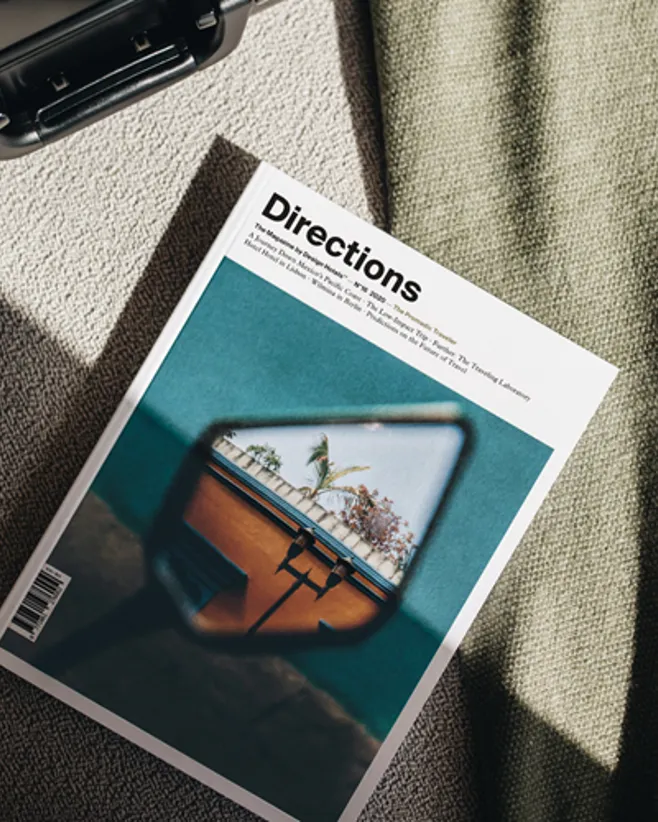
Words Sandra DeanImages Patricia Parinejad & Robert RiegerDate 23 March 2022
The internationally renowned practice, made up of Armand Grüntuch and Almut Grüntuch-Ernst, is one of the most seasoned firms in the city in negotiating Berlin’s post-Wall architectural resurgence. Practicing here since 1991, they built the first big new structure on a former bombed-out plot in Hackescher Markt in 2000. They curated the German Pavilion in the 2006 Venice Architecture Biennale with a focus on urban transformation and conversion and led the adaptation and reprogramming of the Ehemalige Jüdische Mädchenschule, a former Jewish girls’ school on Berlin’s gallery-laden Auguststrasse that the architects transformed into a complex of cafés, restaurants, and galleries that doubles as a memorial.

Former courthouse Built in an Augsburger Baroque and Wilhelminian style

Constructed in 1896 By architects Adolf Bürckner and Eduard Fürstenau

Entrance to the hotel The prison building contains the rooms
These projects were concerned not only with the physical transformation of the built environment but with the treatment of its heritage, a sensitive process that Grüntuch Ernst Architects brought to bear on its latest undertaking: the conversion of a former courthouse and women’s prison in Berlin’s Charlottenburg district into a unique hotel.

Kanstrasse at the end of the 19th century The prison building at the back

Before The early blueprints

After Grüntuch Ernst Architects' conversion plans
“We see Wilmina as one milestone in the transformation of the city around us in a way that honors its history while also bringing in new life, a fresh mix of people,” says Armand. The 3,000-square-meter plot of Wilmina stretches from one of the city’s main axes, Kantstrasse, back to Pestalozzistrasse behind, in the heart of Berlin West within walking distance of bustling shopping boulevard Kurfürstendamm and the Rococo Charlottenburg Palace. On Kantstrasse is a former courthouse built in 1896 by architects Adolf Bürckner and Eduard Fürstenau in an Augsburger Baroque and Wilhelminian style. Behind it, a series of transitional courtyards draws guests back from the street to the red-brick former prison buildings.

Former prison buildings Now houses the hotel

Bars were kept on the windows Some end midway since the windows have been doubled in size

On top of the original prison building The newly built penthouse
Almut Grüntuch-Ernst
The architects were immediately taken with the space. “From the very first moment we entered it, it was like an enchanted place that was left behind for decades, overgrown with vegetation,” says Almut. “You enter and are struck by this forgotten feeling. You’re inside this romantic, castle-like structure erected at a time when there were no other buildings around it, and all you hear is birdsong.”

Glass wall The architects cut a part of a former cell entrance
Over the past several years, Grüntuch Ernst Architects set about converting the property, an undertaking complicated by the difficult and rigid building structures. Massively thick 40-50 cm walls and floors had to be cut through to open up access and space. Ways had to be found to combine tiny former prison cell units into comfortable guestrooms with ensuite bathrooms. “It’s about inverting the building’s configuration and spatial concepts, from an antisocial space to a very social space,” explains Almut.
The biggest challenge, undoubtedly, was to navigate the thorny set of ethical, philosophical, and cultural quandaries that arise in an adaptation of this sort. How much of the past should remain visible? What does a respectful adaptation look like? How much intervention is necessary and appropriate? All through the building process, spaces, materials, functions, and fittings have been rethought, renegotiated, and reconfigured as different problems and new solutions came along. Rather than discarding original fittings, the architect-owners found ways to re-appropriate them into the conversion. Some, such as the cell doors, remain in place; others are recycled within the project.

A lot of effort went into finding a balance, they say, “between historical preservation and adaptive reuse for contemporary life.” Wilmina is a place with a past, like so many others in this city, that has been given a new chance, a new lease on life. And this past wasn’t always a simple one. During World War II, German resistance and anti-regime activists were held in the prison. After the war, the court building was used as a land registry office, while the prison at the back became a juvenile detention center until 1985 and was used as an archive afterwards until 2010. Later, it became a set for several high-profile historical films, including the Academy Award winner, The Reader, starring Kate Winslet and Ralph Fiennes, and the 2016 adaptation of Hans Fallada’s Alone in Berlin.
There are many traces of the past that the visitor stumbles across. It is a Chekhovian “show, don’t tell” approach that promises to work well given the delicate subject matter. For those who would like to delve deeper into the topic, the architects have left one cell preserved and untouched to house the archive and history of the site—like a tiny, quiet museum.

The preceding article is excerpted from the 2019 edition of Directions, an annual magazine by Design Hotels that looks at movements underway in art, design, food, wellness and fashion, and how they affect the way we live and travel. This issue explores the New Sanctuaries, spaces both physical and figurative, natural and designed, where we find renewal, shelter, communion, and expressions of the sublime.